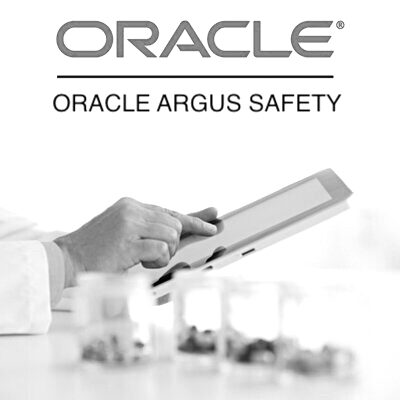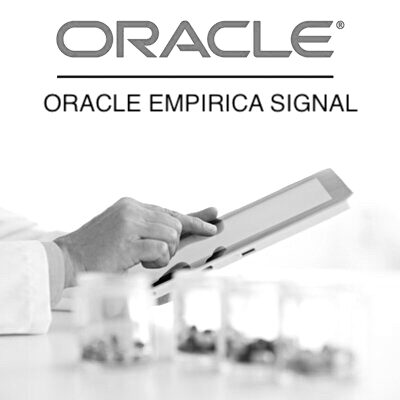Table of Contents
- Oracle Argus Safety Essentials
- Oracle Argus Safety Essentials + Console
- Oracle Argus Safety – Live Online
- Oracle Argus Safety + Console – Live Online
- Oracle Empirica Signal
- Oracle Empirica Signal – Live Online
- Diploma in Pharmacovigilance
- Argus Safety – Business Configuration and Administration
Data Mining Techniques in Pharmacovigilance and the Role of Empirica Signal Software
Introduction
Pharmacovigilance, the science of monitoring the effects of medical drugs after they have been licensed for use, is a crucial aspect of ensuring public health safety. With the growing volume of data from various sources such as clinical trials, electronic health records, and spontaneous reporting systems, traditional methods of drug safety surveillance are becoming increasingly inadequate. This is where data mining techniques come into play, providing sophisticated tools to analyze large datasets and identify potential adverse drug reactions (ADRs). One of the leading software solutions in this field is Empirica Signal, which leverages advanced data mining techniques to enhance pharmacovigilance efforts.
Understanding Data Mining in Pharmacovigilance
Data mining in pharmacovigilance involves the extraction of meaningful patterns from large datasets. These patterns help in detecting signals—an indication that a drug may be associated with an ADR. Various techniques are employed in data mining to uncover these signals, each with its strengths and specific applications.
- Disproportionality Analysis: This is one of the most common techniques used in pharmacovigilance. It involves comparing the observed number of drug-ADR pairs with the expected number based on overall reporting rates. Key methods include:
- Proportional Reporting Ratio (PRR): Compares the proportion of reports for a specific ADR with a particular drug to the proportion of the same ADR for all other drugs.
- Reporting Odds Ratio (ROR): Similar to PRR but uses odds ratios to measure the strength of association between a drug and an ADR.
- Bayesian Confidence Propagation Neural Network (BCPNN): A probabilistic approach that uses Bayesian statistics to estimate the strength of the association between drugs and ADRs.
- Multi-item Gamma Poisson Shrinker (MGPS): A method that adjusts for variability and rare events by shrinking observed frequencies towards an overall mean.
- Temporal Data Mining: This technique focuses on identifying patterns over time, which is crucial for understanding the onset and duration of ADRs. Techniques include:
- Sequence Pattern Mining: Identifies frequent sequences of drug administrations and ADR occurrences.
- Time-to-Event Analysis: Evaluates the time between drug exposure and the onset of ADRs, often using survival analysis techniques.
- Text Mining: With a significant amount of pharmacovigilance data available in unstructured text format (e.g., clinical narratives, case reports), text mining techniques are essential. These involve natural language processing (NLP) to extract relevant information from text and identify potential signals.
- Clustering and Classification: Machine learning algorithms like clustering (e.g., k-means, hierarchical clustering) and classification (e.g., decision trees, support vector machines) are used to group similar ADR reports and classify new reports based on learned patterns.
The Role of Empirica Signal Software
Empirica Signal, developed by Oracle Health Sciences, is a leading software platform designed to support pharmacovigilance professionals in detecting and analyzing drug safety signals. It integrates various data mining techniques to provide a comprehensive solution for signal detection and management.
- Advanced Signal Detection: Empirica Signal employs disproportionality analysis techniques such as PRR, ROR, and Bayesian methods to identify potential signals. It also supports more advanced methods like MGPS, which is particularly useful for adjusting for data variability and improving the detection of rare ADRs.
- Interactive Data Exploration: The software provides intuitive dashboards and visualization tools that allow users to explore data interactively. Users can drill down into specific drug-ADR pairs, examine trends over time, and compare findings across different datasets.
- Integrated Workflow: Empirica Signal streamlines the signal management process by integrating data mining with case processing and assessment workflows. This ensures that once a potential signal is detected, it can be promptly evaluated, prioritized, and investigated.
- Customizable Alerts and Reporting: Users can set up customized alerts to notify them of emerging signals based on predefined criteria. The software also generates comprehensive reports that summarize findings, supporting documentation for regulatory submissions, and internal reviews.
- Data Integration and Scalability: Empirica Signal is designed to handle large and diverse datasets, integrating information from spontaneous reporting systems, clinical trials, electronic health records, and literature sources. Its scalable architecture ensures that it can accommodate growing data volumes as more sources become available.
- Regulatory Compliance: The software supports compliance with regulatory requirements by providing tools for documenting signal detection activities, generating audit trails, and facilitating communication with regulatory authorities. This is particularly important in ensuring that pharmacovigilance practices meet global standards.
Case Studies and Real-world Applications
Empirica Signal has been successfully implemented by numerous pharmaceutical companies and regulatory agencies to enhance their pharmacovigilance efforts. Some notable examples include:
- Large Pharmaceutical Companies: Major pharmaceutical companies use Empirica Signal to monitor the safety of their products across different markets. By leveraging the software’s advanced data mining capabilities, these companies can detect potential safety issues early and take proactive measures to mitigate risks.
- Regulatory Agencies: National and international regulatory bodies use Empirica Signal to oversee drug safety on a larger scale. The software aids in evaluating reports from multiple sources, ensuring comprehensive surveillance and timely identification of public health threats.
- Academic Research: Researchers in the field of pharmacovigilance use Empirica Signal to conduct studies on drug safety trends, evaluate the impact of regulatory actions, and develop new methodologies for signal detection.
Conclusion
The integration of data mining techniques in pharmacovigilance has revolutionized the field, enabling more efficient and effective detection of adverse drug reactions. Empirica Signal stands out as a powerful tool in this domain, offering a suite of features that enhance signal detection, streamline workflows, and support regulatory compliance. As the volume and complexity of pharmacovigilance data continue to grow, the role of advanced software solutions like Empirica Signal will become increasingly critical in ensuring the safety and well-being of patients worldwide.
You may be interested in…
-
 eLearning + software
eLearning + softwareOracle Argus Safety Essentials
$599.00 -
 eLearning + software
eLearning + softwareOracle Argus Safety Essentials + Console
$799.00 -
 Live Online
Live OnlineOracle Argus Safety – Live Online
$999.00 -
 Live Online
Live OnlineOracle Argus Safety + Console – Live Online
$999.00 -
 eLearning + software
eLearning + softwareOracle Empirica Signal
$599.00 -
 Live Online
Live OnlineOracle Empirica Signal – Live Online
$999.00 -
 eLearning + software
eLearning + softwareDiploma in Pharmacovigilance
$799.00 -
 eLearning + software
eLearning + softwareArgus Safety – Business Configuration and Administration
$599.00

